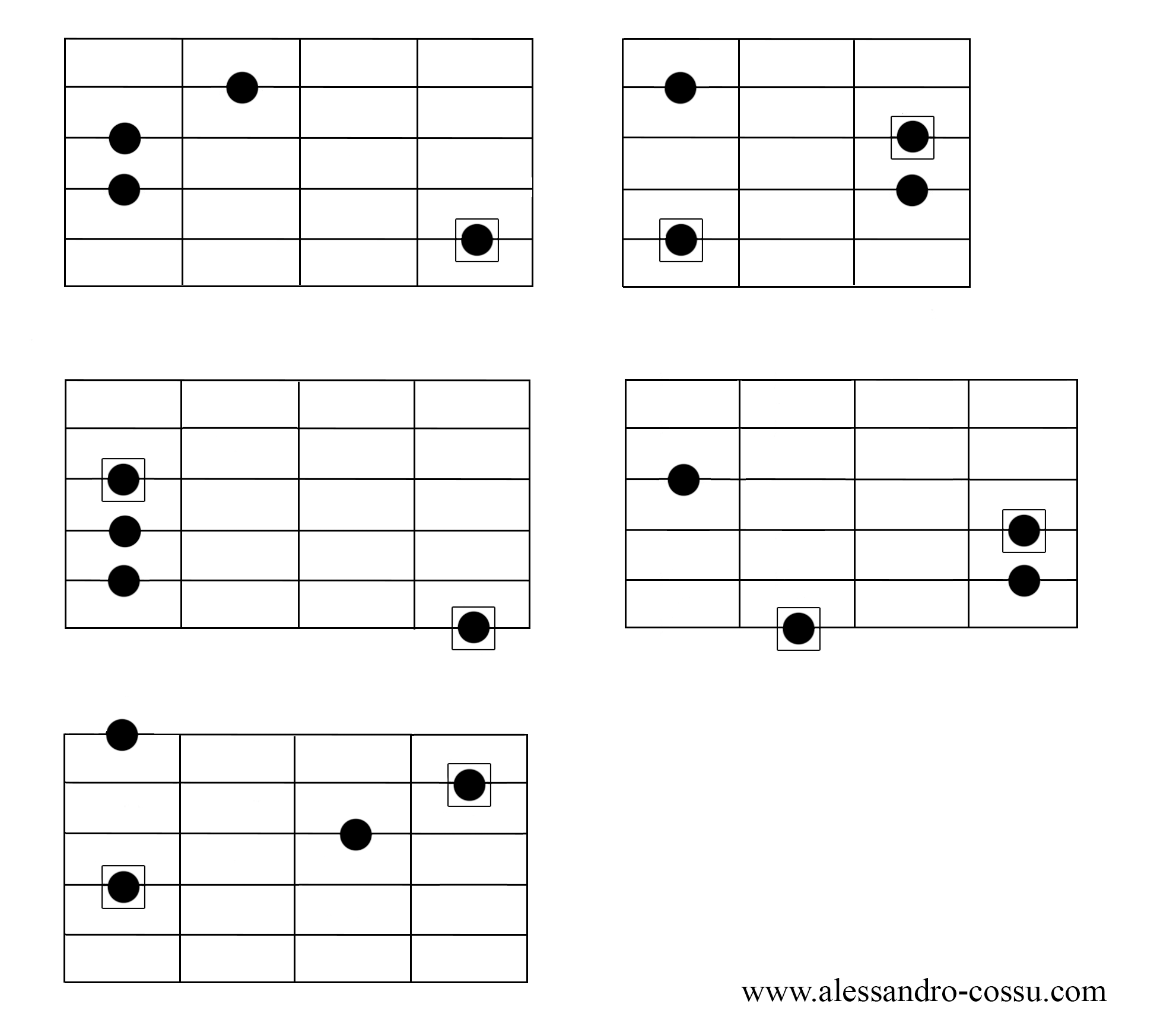
SUSPENDED TRIADS (FINGERINGS)
11 September 2020Fun With Triads
Let’s Start From The Beginning
Let’s make it simple: take a C Major triad. That’s our tonic chord.
Now, the question is: how do we move from here to the other triads of C Major with the minimum effort?
Moving The Root
We all know that the notes of C Major triad are C, E and G.
The simplest case to consider is that of only one note moving, while the other two remain still.
Let’s say that the note moving is now the root, that is C. The tiniest step is clearly the one moving upwards or downwards to the next scale degree (I am now considering only the strictly diatonic possibilities).
Every note of the scale can be the root, third or fifth of a diatonic triad. So, the note C is root of C Major, 3rd of A minor and 5th of F Major.
If the note C moves downward to B, it could lead to B° (B-D-F), G (G-B-D) or Em (E-G-B).
We could also consider the slightly wider step of a third. In this case, if C goes to A we can go from C to Am (A-C-E), F (F-A-C) or Dm (D-F-A).
The next example shows all seven diatonic triads played between the 5th and 8th fret of the guitar on the top three strings.

Moving The Third
We can now do the same with the 3rd, E.
It can move downwards to D, which is in Dm (D-F-A), B° (B-D-F) and G (G-B-D), while if it can also go down a third to C, which is in C (C-E-G), Am (A-C-E) and F (F-A-C).

Moving The Fifth
The last possibility is that of the fifth G moving, while C and E don’t (remember? We are starting from C Major triad). If G moves down a step to F, the harmony can be F, Dm or B°.
This is a very useful approach to understand harmonic and melodic linking, but sometimes us guitarist tend to underestimate its importance because we find easier to play with chords or arpeggios patterns instead of thinking about voices and how they connect one another.
But once you get the idea, you’ll see things differently!


